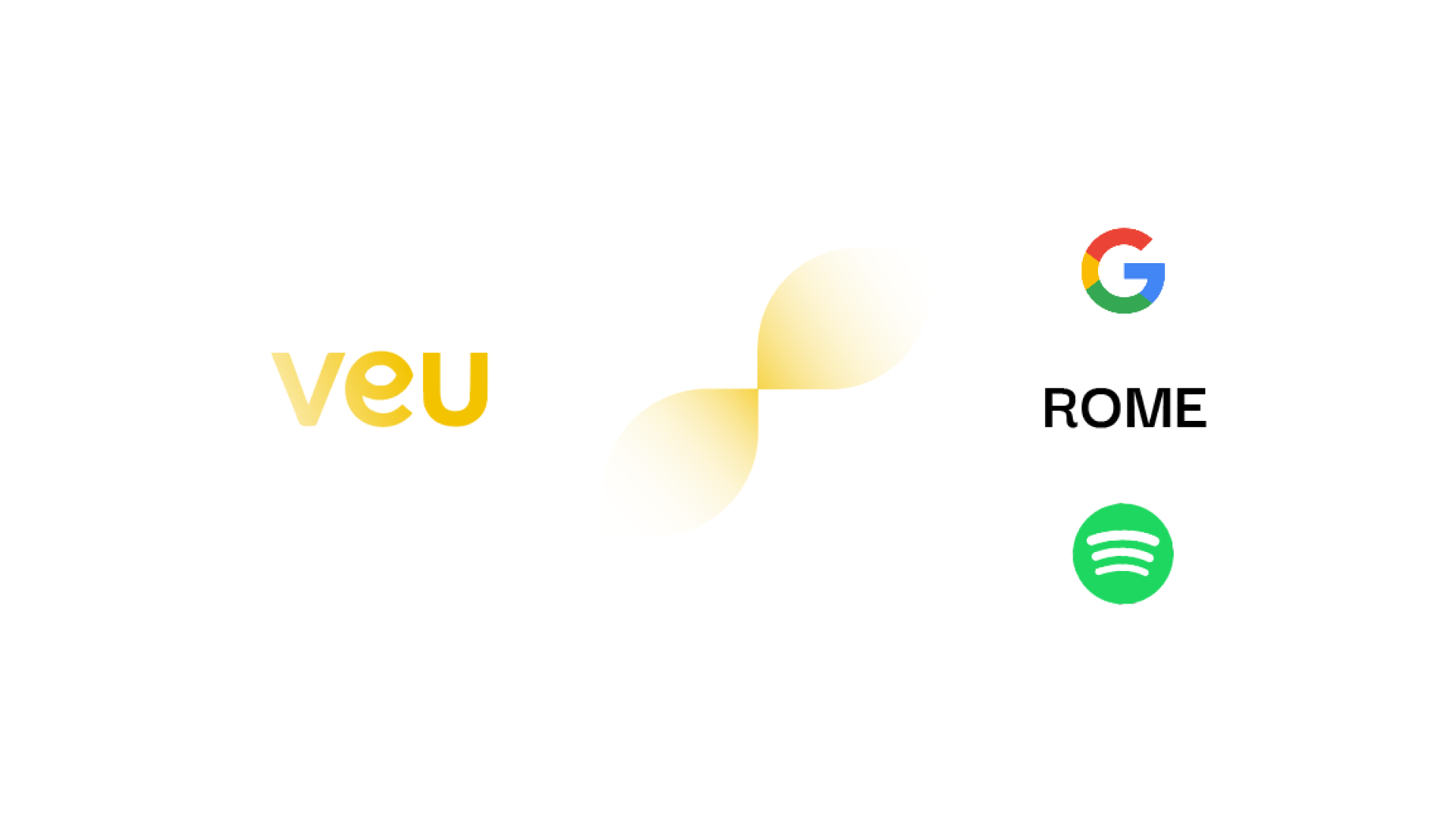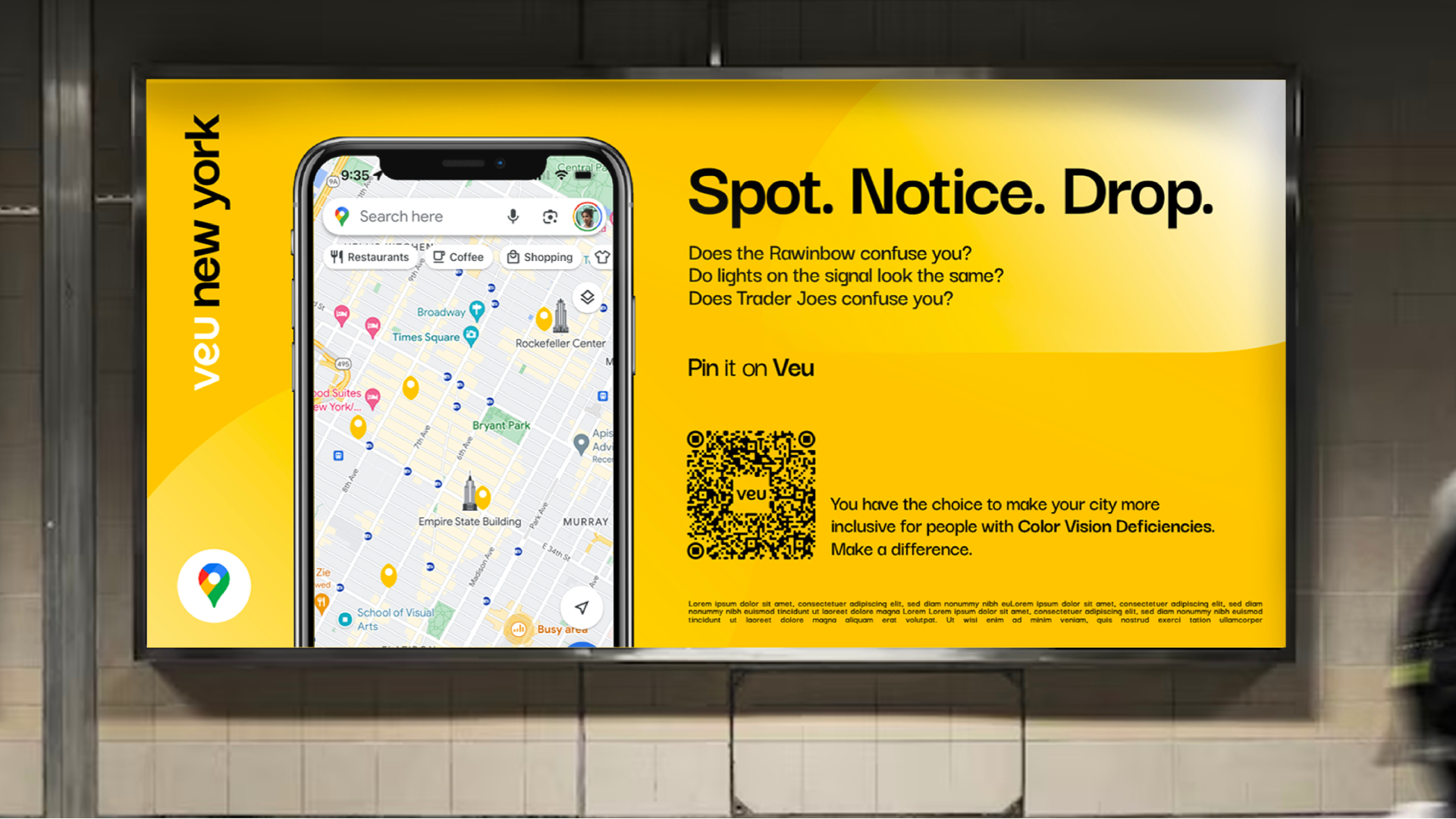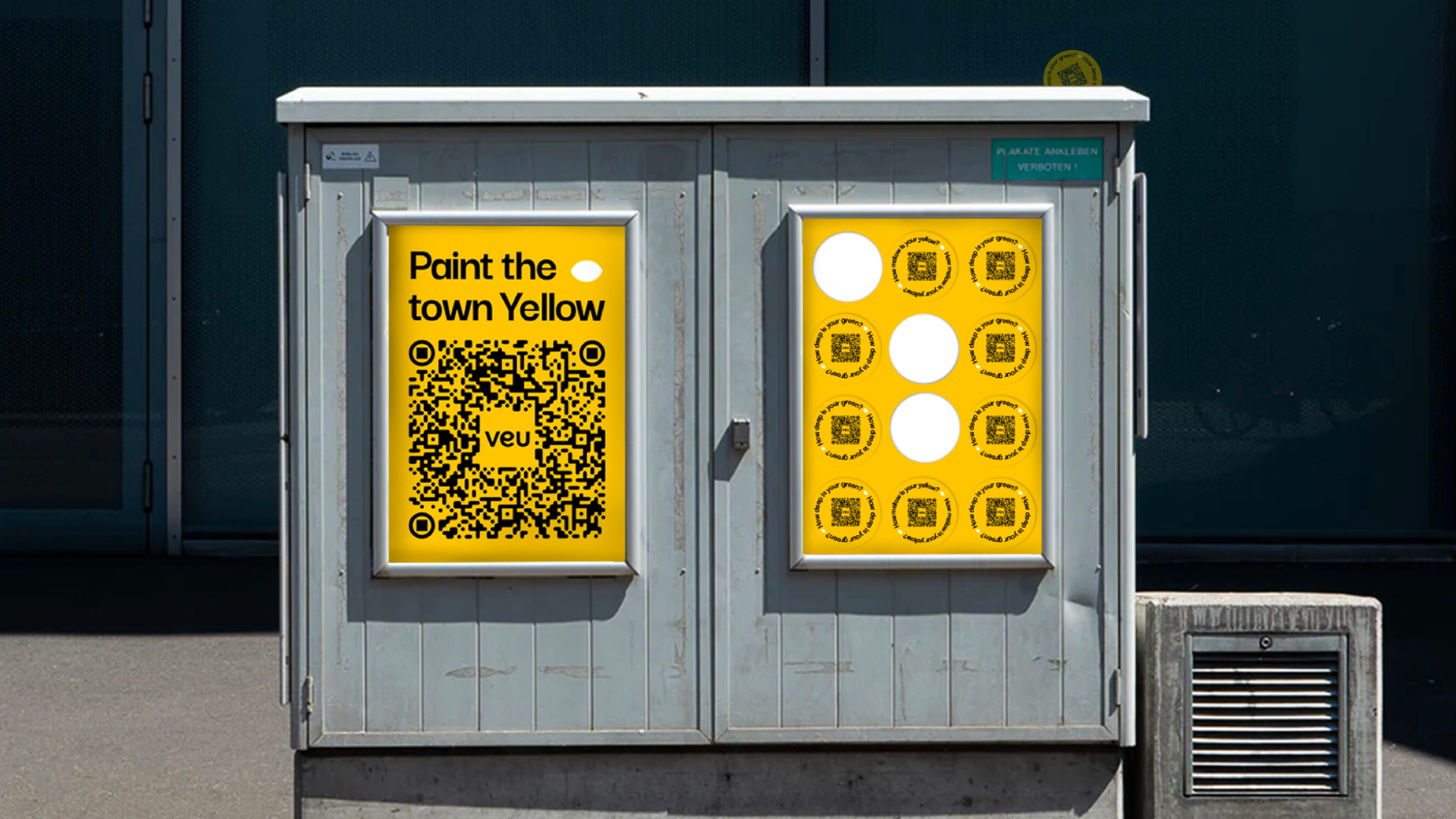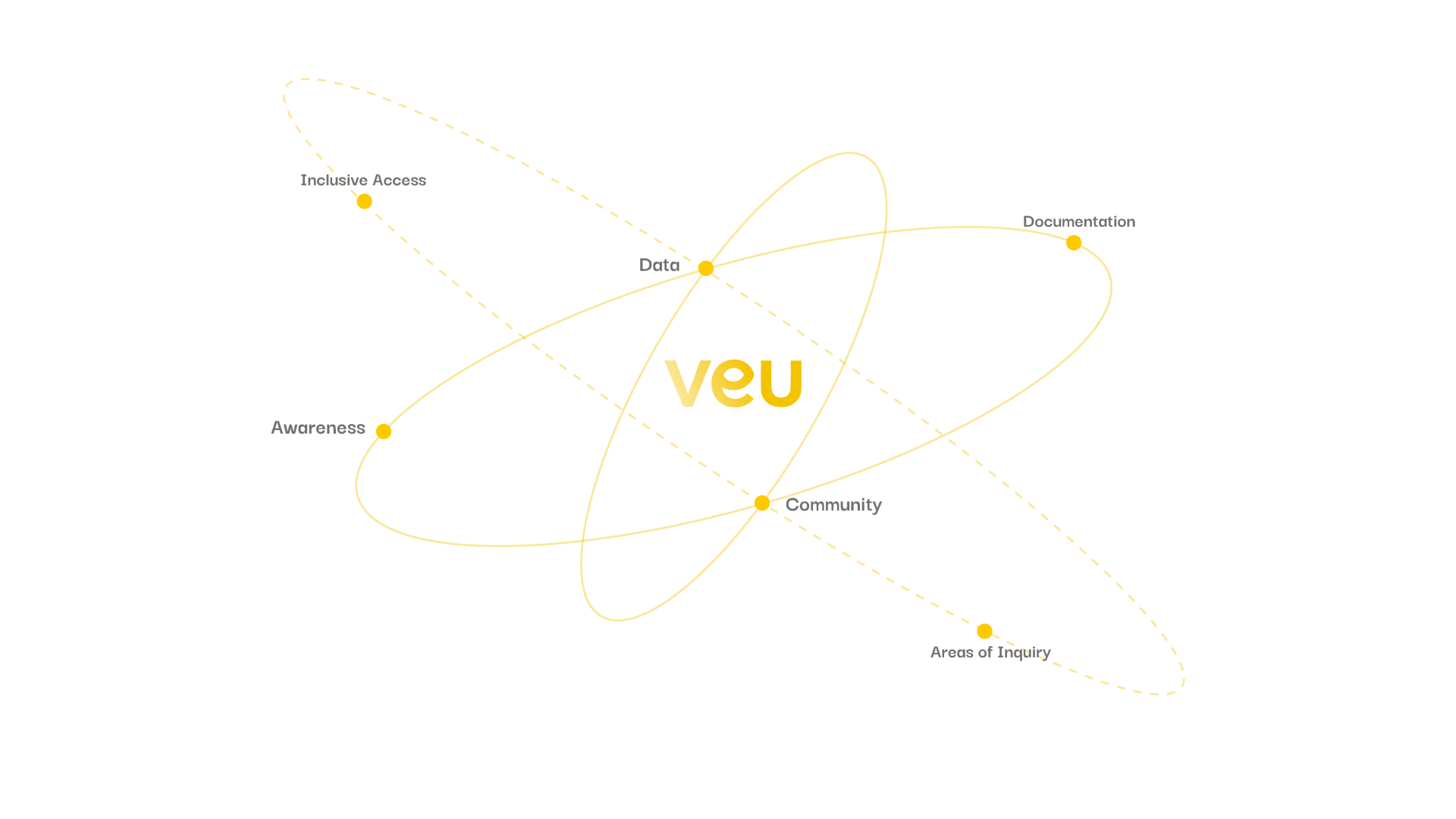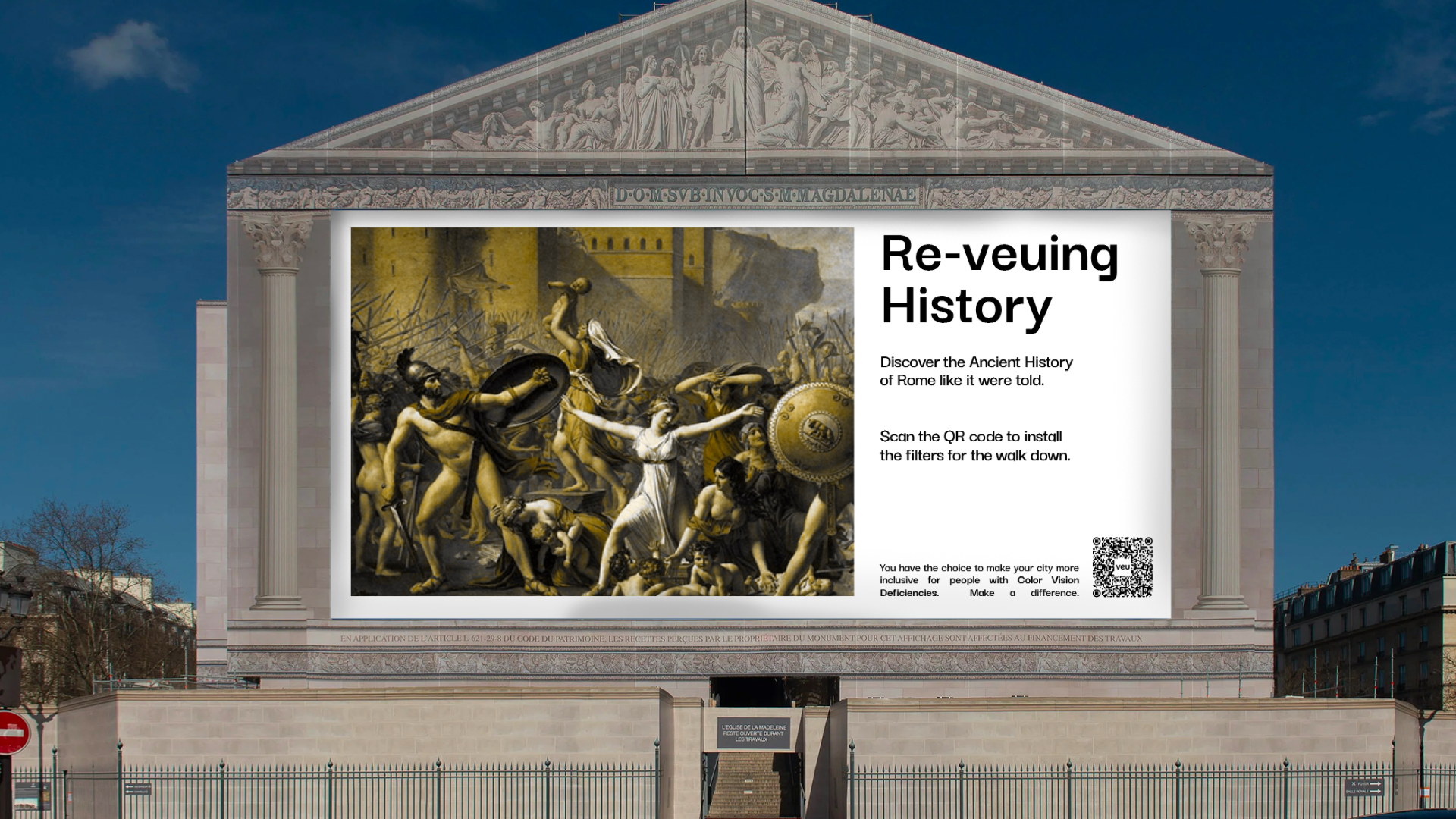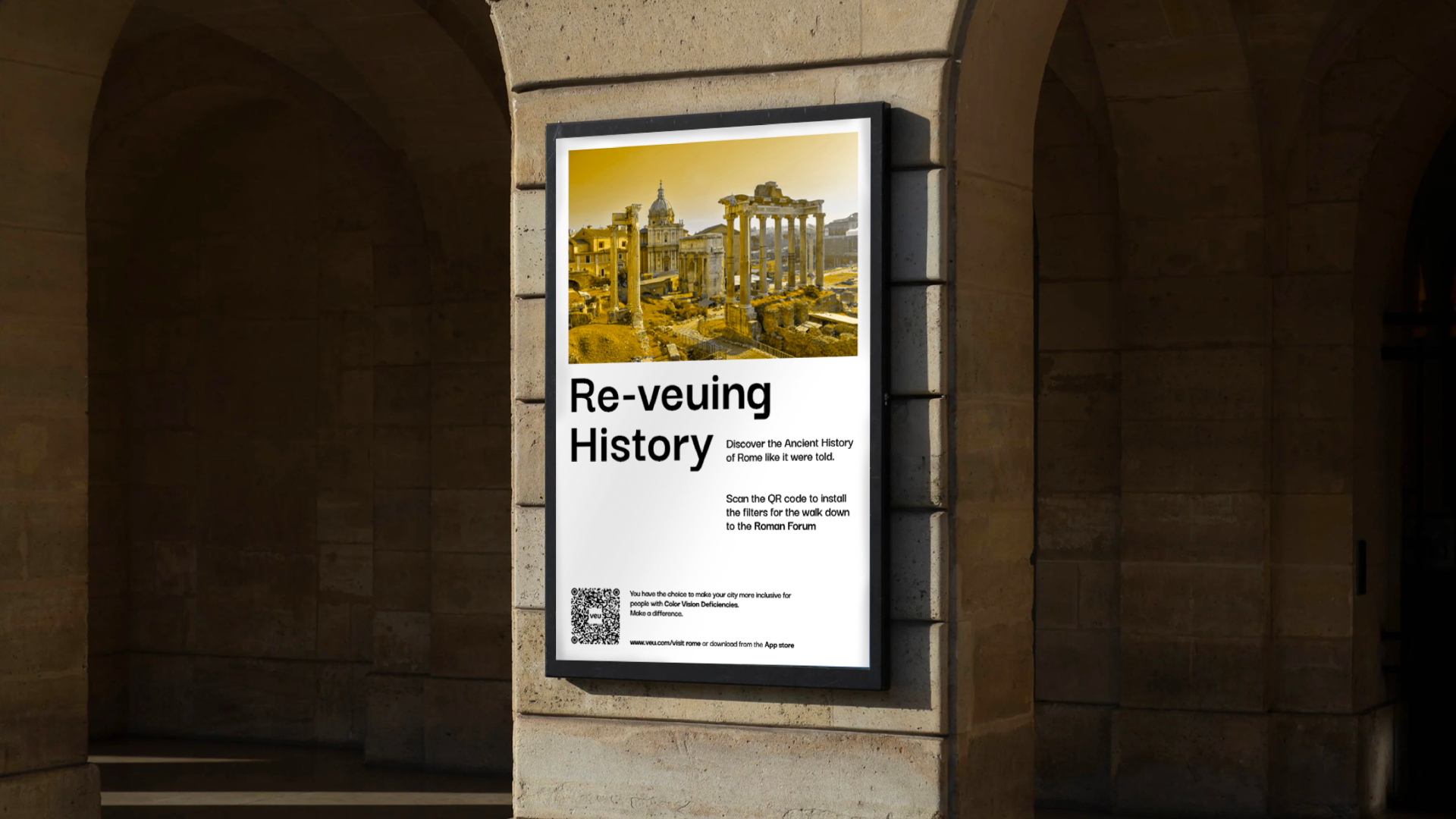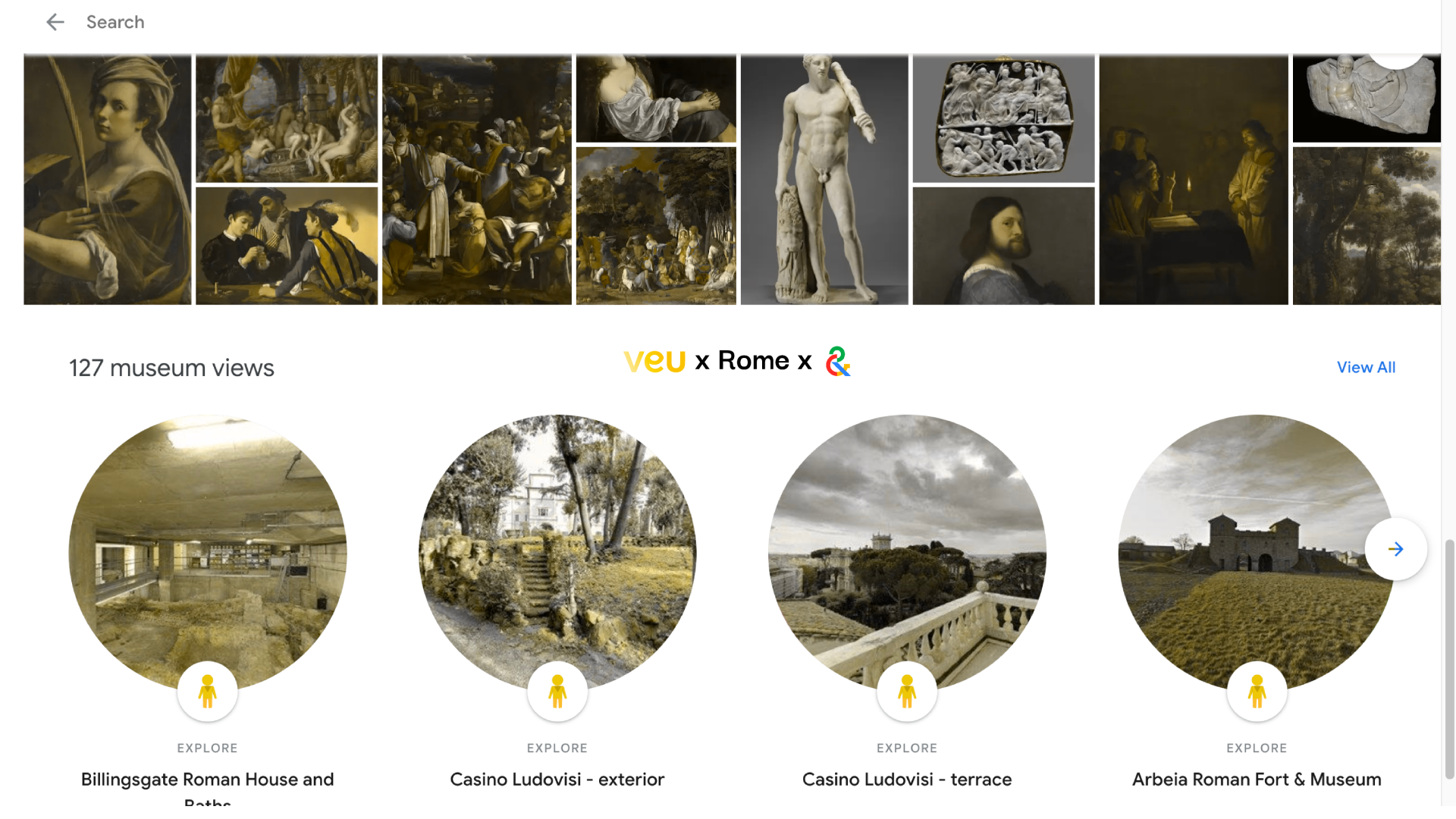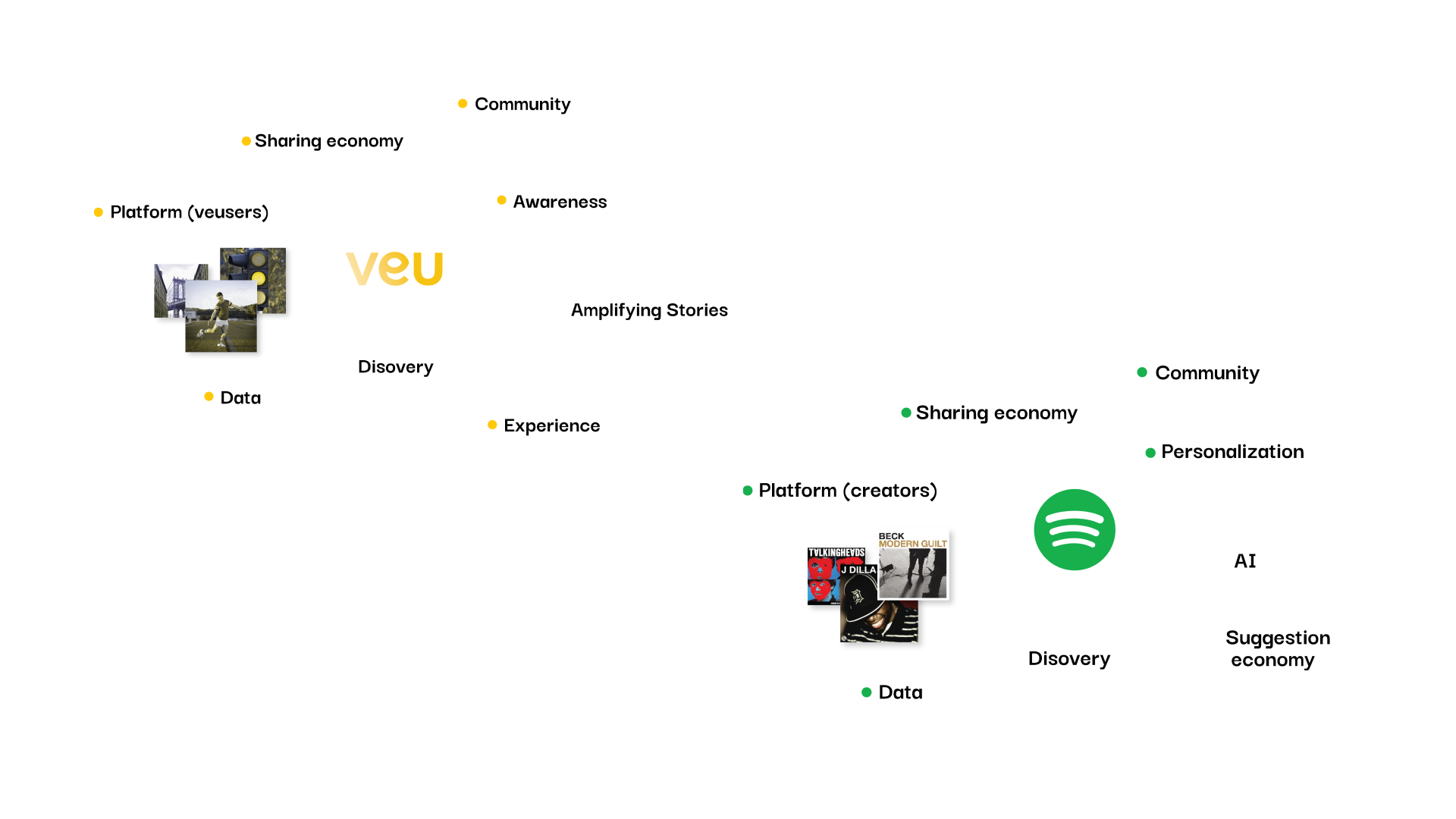Veu: Viewing the World in Partial Color
Does the rainbow confuse you?
What color does the stop-light turn on?
How deep is your green?
Zai Thakoor ’25 set out on a semester-long exploration of color vision deficiency, guided by the principle that design has the power to illicit a strong response—be it delight or dismay.
Her speculative concept, Veu, initially took the form of an app and photo filter that showed those with full-color vision what the world looks like to those without. However, as Thakoor continued to explore various audiences and use cases, she eventually narrowed Veu’s users to those with color vision deficiencies rather than those without.
Take a walk-through of the final Veu website and read more about Thakoor’s project below.
A video walk-through of the Veu website, designed by Zai Thakoor ’25.
What is Veu?
Veu is the largest open-source image dataset driven by a community that sees things differently, documenting how people with color vision deficiencies view the world. In a world primarily designed for a standard visual experience, Veu emerges as an exploration into how we perceive color and sight, driven by a community that appreciates the beauty of diverse perspectives, especially those with color vision deficiencies.
How does it work?
By encouraging users to document their surroundings through in-app experiences and experiments, Veu aims to unravel the challenges individuals with color vision deficiencies encounter in their daily activities. This collective documentation challenges conventional norms, fostering a unique way of seeing the world.
What’s the point… of Veu?
At its core, Veu unravels existing visual systems that inadvertently exclude a significant portion of the population. It ignites a dialogue around the pressing need for inclusive design standards, reminding us that diversity should be celebrated in every pixel.
The Community page of the Veu website presents a variety of interactive features.
The Veu website includes a Spotify integration.
The Veu website includes a customizable pet toy feature, designed around dogs’ limited color-vision spectrum.
Brand Partnerships
Veu struck up partnerships with the MTA, Spotify, and the city of Rome. For the MTA brand campaign, Zai’s messaging focused on increasing inclusivity for those with color vision deficiencies. For the Rome collaboration, she pitched the concept of “Re-veuing” history with an app that depicted Rome in a color scheme evoking ancient history. And finally, for Spotify, she created an interactive feature that associated different colors with different songs.
Final Prototypes
In her final weeks, Zai developed high-fidelity prototypes for both an app and a website, showcasing Veu’s impressive range of possibilities and potentialities. The app allows users with vision color deficiency to document, name, and map the colors they encounter, which are then incorporated into Veu’s color bible. On the Veu website (see first video on this page),
Check out a walk-through of the Veu app below.
See the Veu app in action and experience the world’s color spectrum in ways you never thought possible.




